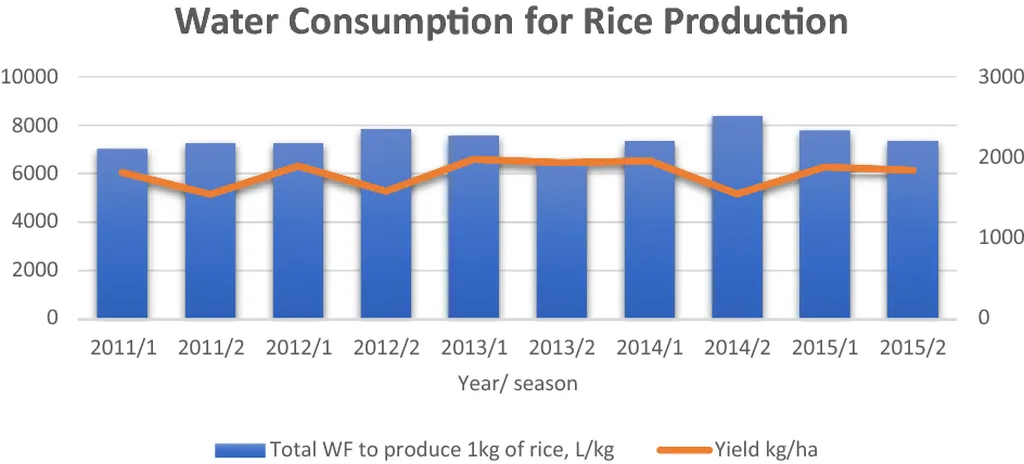In the heart of Southeast Asia, where the humid tropics reign, a critical study is unfolding that could reshape the future of paddy cultivation and, by extension, the agricultural landscape. Led by Wan Amiza Amneera Wan Ahmad, a researcher from the Faculty of Civil Engineering & Technology at Universiti Malaysia Perlis and the Department of Chemical Engineering at the University of Malaya, this investigation delves into the water footprint (WF) of paddy farming, a staple crop that demands significant water resources.
The study, published in *Environmental Research Communications* (which translates to *Communications in Environmental Research*), focuses on Malaysia’s primary rice-growing regions, Kedah and Kelantan. It employs advanced tools like the LARS-WG weather generator and CROPWAT to project future climate variables and estimate water footprint components. The findings are both illuminating and concerning, highlighting the intricate dance between climate change, water availability, and agricultural output.
“Climate-water-agriculture interactions are dynamic and increasingly challenging due to climate change effects,” explains Wan Ahmad. “Water scarcity is emerging as a critical problem, potentially reducing agricultural output and threatening future food availability.” This underscores the urgency of the research, as water resource planning becomes pivotal for sustainable agricultural development.
The water footprint concept evaluates agricultural water consumption by dividing it into blue (surface and groundwater), green (rainwater), and grey (water required to dilute pollutants) components. This comprehensive assessment is crucial for informed agricultural decision-making. The study predicts a rise in temperatures and irregular precipitation patterns, which will significantly impact paddy cultivation.
By 2040, the projections indicate that the off-season (S1) will exhibit a greater water footprint than the main season (S2), except for Kedah during S2. All models forecast green water as the dominant component, followed by grey and blue water, except for Kelantan in S1, where the order is green, blue, and grey. These insights are vital for future planning, emphasizing the need for climate-resilient and water-efficient paddy cultivation.
The commercial implications for the energy sector are profound. As water scarcity becomes more pronounced, the energy required for water extraction, treatment, and distribution will increase. This could lead to higher operational costs and a greater strain on energy resources. Additionally, the agricultural sector’s reliance on water-intensive practices may necessitate innovative solutions, such as improved irrigation techniques and water recycling systems, to mitigate these impacts.
Wan Ahmad’s research also highlights the potential for optimizing fertilizer application to reduce the grey water footprint. This not only conserves water but also minimizes environmental pollution, creating a more sustainable agricultural ecosystem. “Adequate rainfall can reduce irrigation demand, thus lowering the blue water footprint,” she notes. “Optimizing the frequency and amount of fertilizer application offers potential to reduce the grey water footprint component.”
The study’s findings are a call to action for policymakers, agricultural practitioners, and energy sector stakeholders. It underscores the need for integrated water resource management and climate-resilient agricultural practices. As the world grapples with the realities of climate change, such research provides a roadmap for navigating the complexities of water scarcity and ensuring food security.
In the broader context, this research could shape future developments in agritech and water management. It emphasizes the importance of adopting innovative technologies and practices to enhance water efficiency and sustainability. As the agricultural sector evolves, the insights from this study will be invaluable in guiding strategic decisions and fostering a more resilient and sustainable future.
In conclusion, Wan Ahmad’s work is a beacon of hope and a clarion call for action. It highlights the urgent need for sustainable water management practices and offers a pathway to a more resilient and water-efficient agricultural future. As the world watches, the lessons from Malaysia’s paddy fields could very well echo across the globe, shaping the future of agriculture and water resource management.

